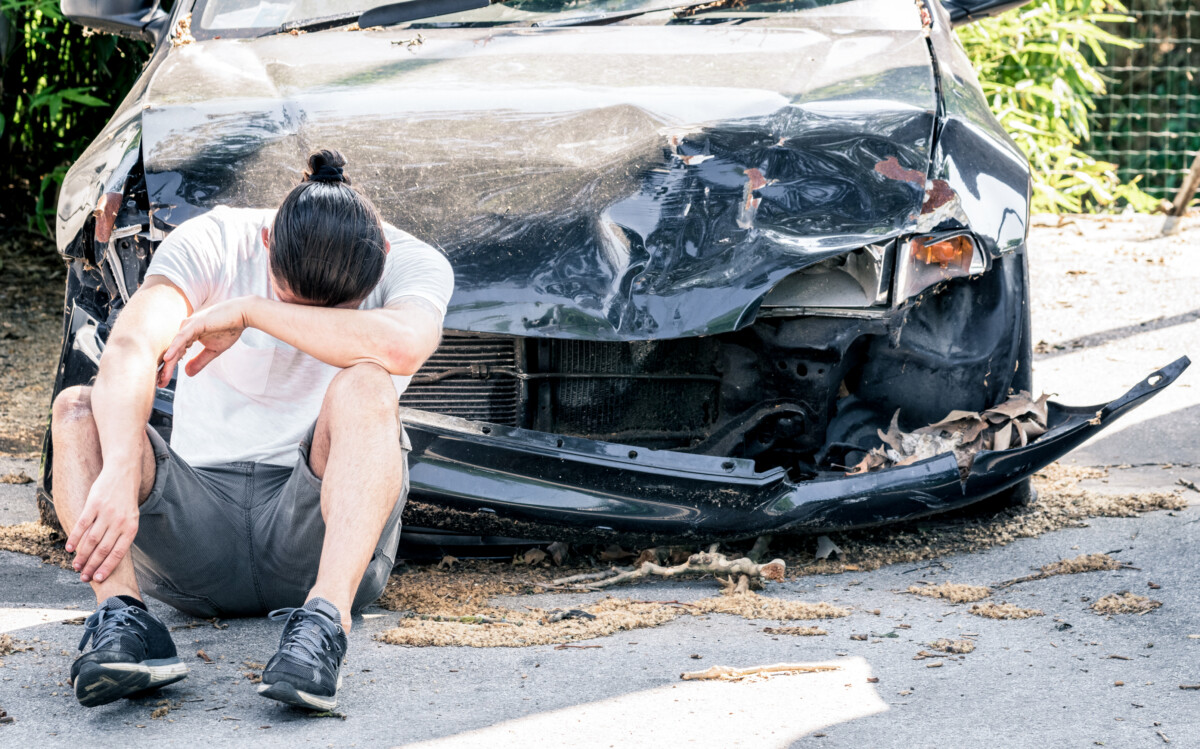Case Law on Motor Vehicle Accident: What It Means for You

Motor vehicle accidents are prevalent, making it essential to understand the case law surrounding them. This legal framework defines the rights and responsibilities of drivers, passengers, and other involved parties. By analyzing case law, we can see how courts interpret laws regarding negligence, liability, and compensation, which significantly affects personal injury claims outcomes.
Overview of Case Law on Motor Vehicle Accidents
Understanding the Basics of Case Law on Motor Vehicle Accidents
Case law on motor vehicle accidents includes various legal principles from judicial decisions that set precedents for future rulings. Key aspects include:
- Negligence: Many cases focus on negligence, where a driver may be deemed negligent for failing to exercise reasonable care, resulting in an accident.
- Liability: Determining liability can be complex, involving multiple parties such as drivers, vehicle manufacturers, or government entities responsible for road maintenance.
- Compensation: Victims can seek compensation for medical expenses, lost wages, and pain and suffering, with case law defining the extent of these compensations based on each case’s circumstances.
Key Statistics on Motor Vehicle Accidents
In the U.S., about 38,000 people die in motor vehicle accidents annually, with over 4 million injured, many needing long-term care. The economic cost exceeds $800 billion each year, covering medical expenses, lost productivity, and property damage. These statistics emphasize the need for effective case law to manage the aftermath of accidents, helping individuals navigate their legal rights and seek justice.
Key Legal Principles in Motor Vehicle Accident Cases
Understanding the case law on motor vehicle accidents is essential for both victims and defendants, as it influences how courts interpret liability, negligence, and damages. Familiarity with these legal principles can significantly affect case outcomes, making it crucial for those involved in accidents to grasp the relevant frameworks.
Negligence
- Negligence involves failing to exercise reasonable care, leading to harm. To prove negligence, a plaintiff must establish duty, breach, causation, and damages. For instance, a driver running a red light may be deemed negligent for breaching their duty to obey traffic signals.
Comparative Fault
- Comparative fault rules allow for blame allocation among parties in an accident. If a plaintiff is partially at fault, their compensation may be reduced accordingly. For example, a driver found 30% at fault may see their damages reduced by that percentage.
Statute of Limitations
- Each state has a statute of limitations dictating how long victims have to file lawsuits, typically ranging from one to six years. Missing this deadline can forfeit the right to seek compensation, emphasizing the need for prompt action after an accident.
Insurance Coverage
- Understanding insurance coverage is vital, as most states require liability insurance for drivers. Coverage specifics can vary, so awareness of policy details is important. Notably, about 12.6% of drivers were uninsured in 2020, underscoring the need for knowledge about coverage options.
Recent Trends in Motor Vehicle Accident Case Law
Motor vehicle accidents are a common occurrence in today’s society, and the legal framework surrounding them is continually changing. Understanding the case law on motor vehicle accidents is vital for victims and insurance companies, as it helps determine liability and sets important precedents for future cases. Recent trends in this area reflect shifts in societal attitudes and technological advancements, significantly influencing how cases are managed in court.
Increased Use of Technology in Evidence Gathering
- Dashcam Footage: The use of dashcams is on the rise, providing critical evidence in accident cases.
- Mobile Apps: Accident reporting apps are becoming popular, allowing for more effective documentation of incidents.
These technological advancements have transformed evidence gathering, making it easier to establish liability and improve the efficiency of legal proceedings.
Changes in Liability Standards
- Comparative Negligence: Many jurisdictions are adopting comparative negligence, allowing for shared liability.
- Strict Liability for Certain Offenses: Some states are implementing strict liability for specific traffic violations, like DUI.
This shift acknowledges the complexities of accidents involving multiple parties and aims to promote safer driving conditions.
Impact of Rideshare Services
- New Legal Challenges: The growth of rideshare services like Uber and Lyft raises new legal questions about liability.
- Insurance Coverage Issues: Determining applicable insurance policies in rideshare accidents can be complex.
As rideshare services expand, the legal landscape continues to evolve, requiring careful navigation by drivers and passengers alike.
Impact of Case Law on Insurance Claims
Understanding case law on motor vehicle accidents is essential for both victims and insurance companies. This body of law, established by previous court decisions, significantly influences insurance claims outcomes. By examining these legal precedents, individuals can navigate the complexities of their claims and comprehend their rights and responsibilities after an accident.
The Role of Case Law in Insurance Claims
Case law shapes how insurance claims are processed, providing a framework for determining liability and assessing damages.
Understanding Liability
- Negligence Standards: Courts use established negligence standards to determine fault, holding negligent drivers liable for damages.
- Comparative Fault: Many jurisdictions apply comparative fault rules, allowing damages to be apportioned based on each party’s degree of fault.
Impact on Claim Settlements
- Precedent-Setting Cases: Landmark cases can influence future claims, often leading to more favorable settlements for victims.
- Insurance Policy Interpretations: Courts interpret insurance policy language, affecting the coverage available to claimants and helping victims maximize their claims.
Statistics on Motor Vehicle Accident Claims
- The National Highway Traffic Safety Administration (NHTSA) reported approximately 38,680 fatalities in motor vehicle crashes in 2020, underscoring the importance of understanding legal rights post-accident.
- A study by the Insurance Research Council revealed that nearly 1 in 8 drivers are uninsured, complicating claims and the application of case law in compensation determinations. In conclusion, staying informed about case law on motor vehicle accidents is vital for individuals to advocate for their rights and navigate the complexities of insurance claims.
Future Directions in Motor Vehicle Accident Legislation
Motor vehicle accidents are prevalent, and the legal landscape surrounding them is constantly evolving. Case law on motor vehicle accident significantly shapes the rights and responsibilities of drivers, passengers, and insurance companies. Understanding these legal precedents is crucial for individuals navigating their situations and for anticipating future legislative trends that could affect road safety and liability.
Several key areas are likely to influence the future of motor vehicle accident legislation, including technological advancements, changing societal attitudes, and the ongoing development of case law on motor vehicle accidents.
Technological Advancements
- Autonomous Vehicles: The emergence of self-driving cars raises questions about liability in accidents.
- Data Collection: The use of telematics can provide vital evidence in accident cases, leading to more accurate fault determinations.
Lawmakers will need to adapt existing laws to address these technological changes, particularly regarding liability and insurance coverage.
Changing Attitudes Towards Driving
- Ride-Sharing Services: The rise of Uber and Lyft has transformed personal transportation.
- Distracted Driving Awareness: Increased public awareness of the dangers of texting while driving may lead to stricter laws.
As societal attitudes evolve, legislation will likely adapt accordingly, potentially resulting in harsher penalties for distracted driving and new regulations for ride-sharing companies.
Evolving Case Law
- Precedent Setting Cases: Landmark cases continue to influence the interpretation of motor vehicle accident laws.
- Insurance Liability: Ongoing litigation can reshape how insurance companies handle claims.
In conclusion, the future of motor vehicle accident legislation is set for significant changes driven by technology, societal shifts, and evolving case law, making it essential for all road users to stay informed about these trends.
FAQs: Case Law on Motor Vehicle Accident
Q1: What constitutes a valid motor vehicle accident case in most states?
A: A valid case usually requires proof of negligence—showing that one party owed a duty of care, breached it, and caused injury or damage as a direct result of the accident.
Q2: What is the maximum you can sue for a car accident?
A: The maximum varies by state and case specifics. Some states impose caps on damages, especially for non-economic losses, while severe injury cases can result in multimillion-dollar awards.
Q3: Are car accidents tort law?
A: Yes, most car accident claims fall under tort law, where the injured party seeks compensation for harm caused by another’s negligence or wrongful act.
Q4: What is the maximum compensation for a motor vehicle accident?
A: Maximum compensation depends on factors like insurance policy limits, state laws, and the severity of damages, including medical costs, lost wages, and pain and suffering.
Final Thoughts
Case law on motor vehicle accidents shapes how claims are handled and what compensation victims can expect. Understanding the basics of negligence and damages can help you navigate your case more effectively. Always consult a qualified attorney to ensure your rights are protected and to maximize your compensation.
Don’t wonder if you have a case—know for sure at LegalCaseReview.com or 📞 (833) 670-8682.


